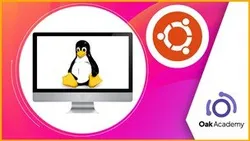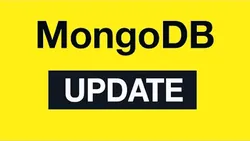
Linux for Beginners 
This Linux tutorial provides an introduction to the Linux operating system, and covers topics such as possible options to use Linux on MacOS and Windows, creating Linux containers using Docker, and understanding Shell, Terminal and Command. It is designed to help beginners get started with Linux. ▼
ADVERTISEMENT
Course Feature
![]() Cost:
Cost:
Free
![]() Provider:
Provider:
Youtube
![]() Certificate:
Certificate:
Paid Certification
![]() Language:
Language:
English
![]() Start Date:
Start Date:
On-Demand
Course Overview
❗The content presented here is sourced directly from Youtube platform. For comprehensive course details, including enrollment information, simply click on the 'Go to class' link on our website.
Updated in [February 21st, 2023]
Aspect 1: You can learn the basics of Linux, such as how to use the shell, terminal, and command, how to get information about the Linux computer, and how to get help about commands using the man utility. You can also learn about processes, data streams, and piping, as well as files and directories management.
Aspect 2: You can learn how to install packages using apt-get, use the htop utility, redirect STDOUT and STDERR to a file, send data to STDIN, and use the find command. You can also learn about tar and gzip utilities, sorting files, users management, permissions, and creating executable scripts.
Aspect 3: You can learn about Linux networking, such as exploring IP address settings, verifying connectivity with remote servers, enabling SSH on the Linux server, connecting to the Linux server remotely via SSH, and using curl and wget utilities. You can also learn about environment variables and how to access them in a script.
Aspect 4: You can learn how to use Linux on MacOS and Windows, as well as how to create Linux containers using Docker. This course will provide you with a comprehensive overview of Linux, from the basics to more advanced topics, so you can become a proficient Linux user.
[Applications]
Upon completion of the Linux for Beginners course, participants will have a comprehensive understanding of the Linux operating system and be able to apply their knowledge to a variety of tasks. Suggested applications of the course include creating Linux containers using Docker, managing files and directories, managing users and permissions, and networking. Participants will also be able to create and execute scripts, use the find command, and use utilities such as tar and gzip.
[Career Paths]
Three job position paths recommended for learners of this course are:
1. Linux System Administrator: Linux System Administrators are responsible for the installation, configuration, and maintenance of Linux systems. They are also responsible for troubleshooting any issues that arise with the system. They must have a strong understanding of Linux commands and be able to use them to manage the system. Additionally, they must be able to configure and manage network services, such as DNS, DHCP, and FTP. As the demand for Linux systems increases, the need for Linux System Administrators is expected to grow.
2. Linux Developer: Linux Developers are responsible for developing applications and software for Linux systems. They must have a strong understanding of Linux commands and be able to use them to develop applications. Additionally, they must be able to debug and troubleshoot any issues that arise with the applications. As the demand for Linux applications increases, the need for Linux Developers is expected to grow.
3. Linux Security Engineer: Linux Security Engineers are responsible for ensuring the security of Linux systems. They must have a strong understanding of Linux commands and be able to use them to secure the system. Additionally, they must be able to configure and manage security services, such as firewalls and intrusion detection systems. As the demand for secure Linux systems increases, the need for Linux Security Engineers is expected to grow.
Course Provider

Provider Youtube's Stats at AZClass
Discussion and Reviews
0.0 (Based on 0 reviews)
Explore Similar Online Courses

Grading Pattern Making Manual - Fashion

MongoDB Update Queries

Python for Informatics: Exploring Information

Social Network Analysis

Introduction to Systematic Review and Meta-Analysis

The Analytics Edge

DCO042 - Python For Informatics

Causal Diagrams: Draw Your Assumptions Before Your Conclusions

Whole genome sequencing of bacterial genomes - tools and applications

Introduction to Linux : Full Course for Beginners

The 50 Most Popular Linux & Terminal Commands - Full Course for Beginners


Start your review of Linux for Beginners